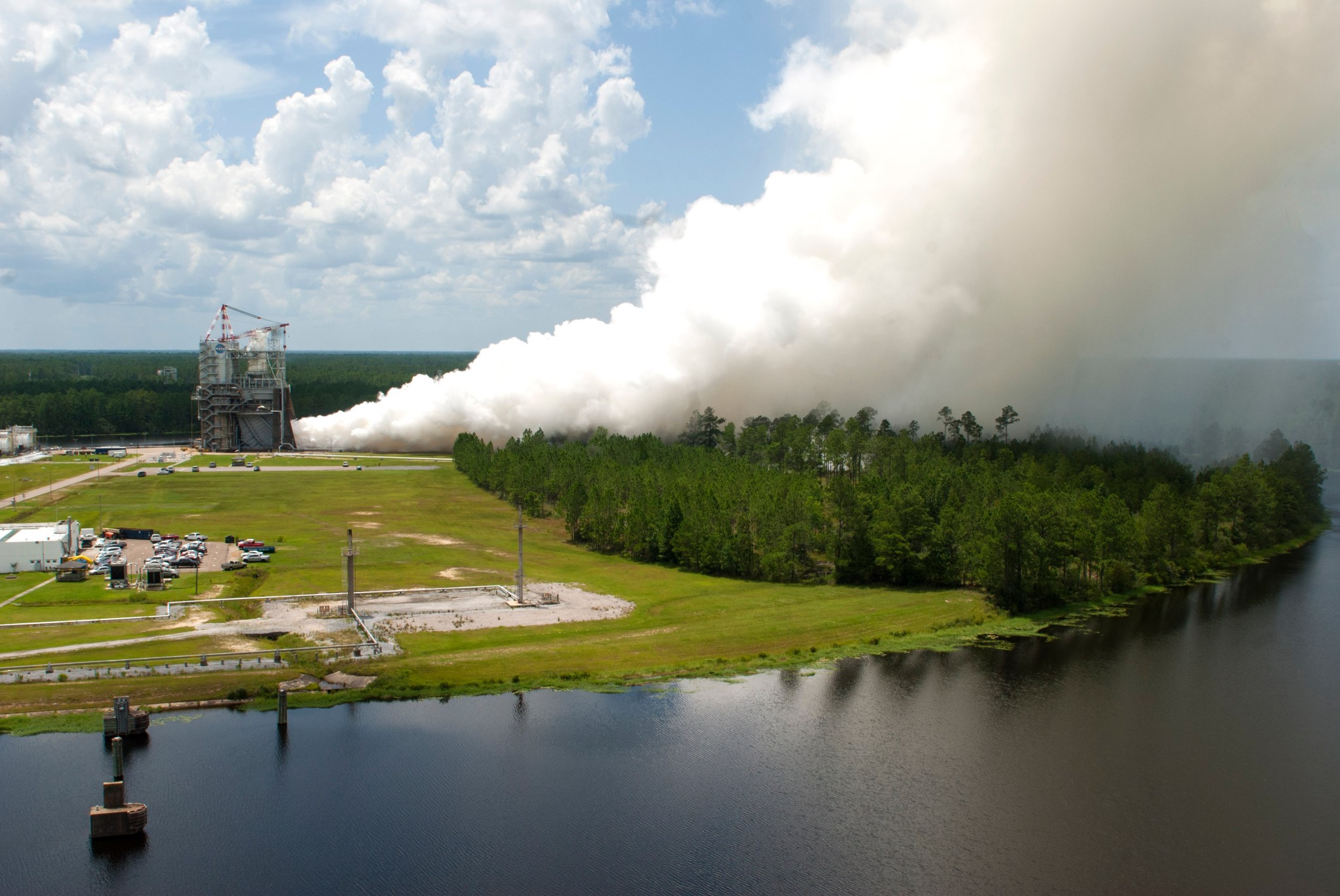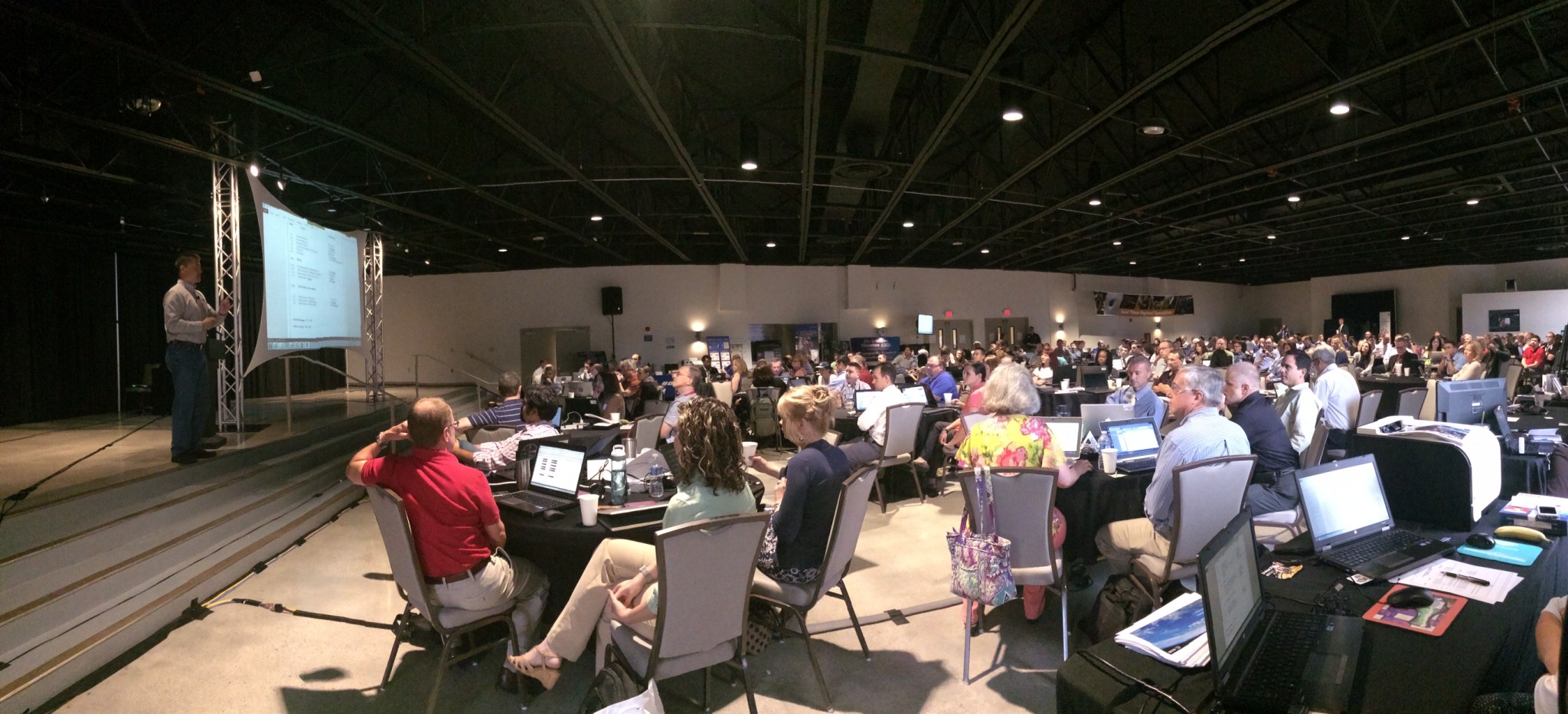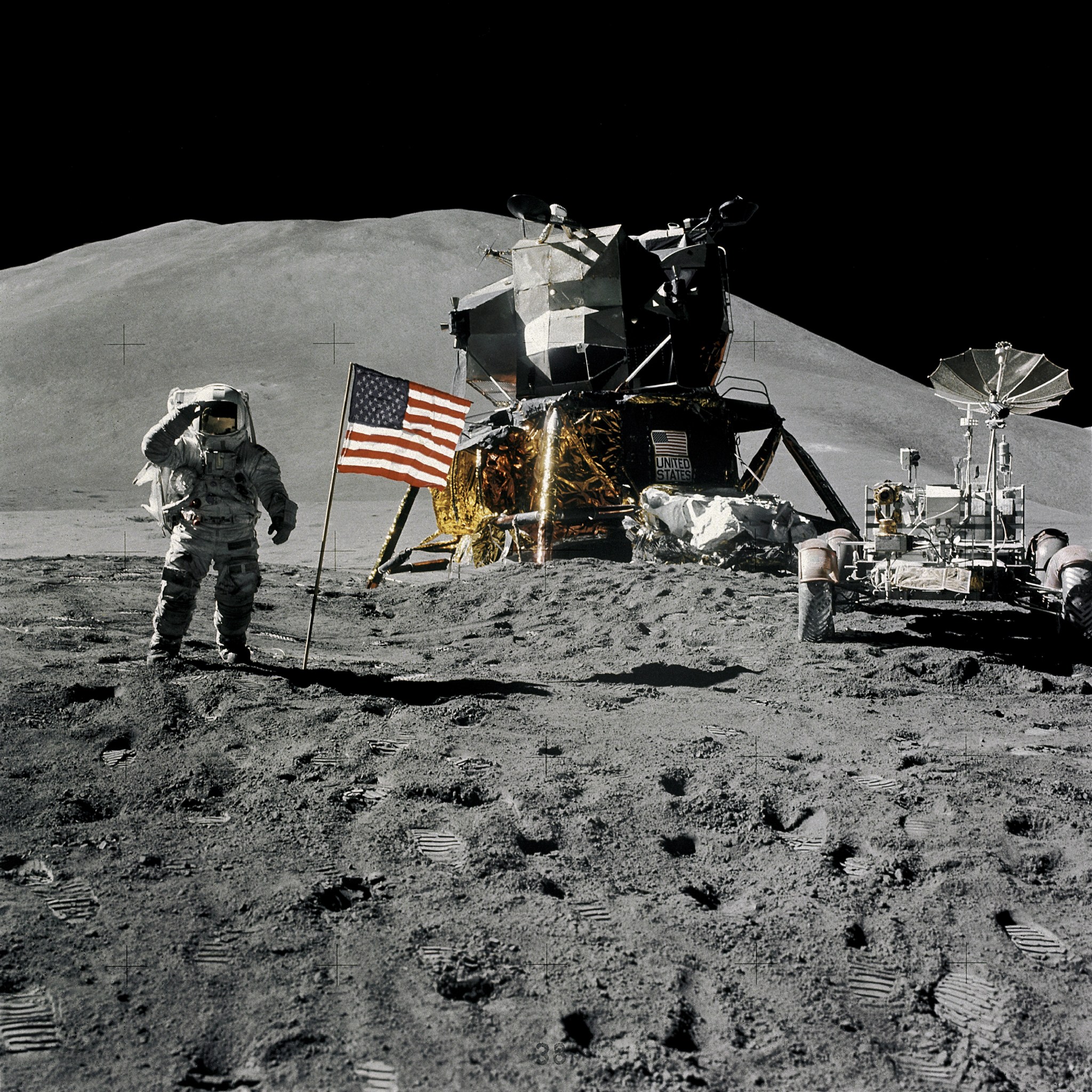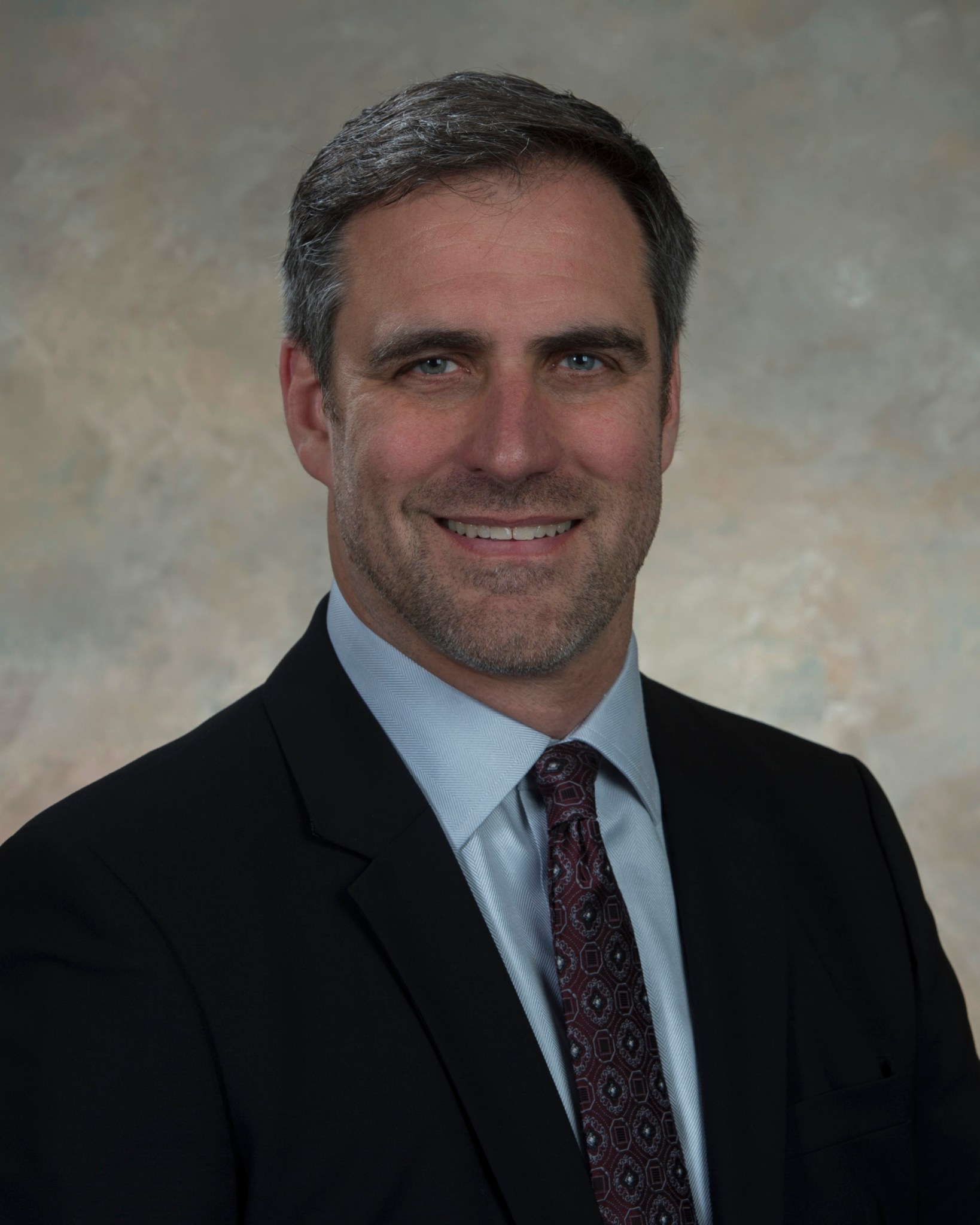In This Week’s Star
- NASA SLS RS-25 Engine Fires Up for the Journey to Mars
- Marshall Smith Named Exploration Systems Development Chief Engineer
- Scientists Gather in Huntsville to Guide the Future of Space Station Discoveries
- 2016 Poster Expo For Marshall Interns to be Held Aug. 10
- This Week in NASA History: Apollo 15 Astronauts Deploy First Lunar Roving Vehicle — July 31, 1971
- Obituaries
NASA SLS RS-25 Engine Fires Up for the Journey to Mars

NASA conducted a series of developmental tests on the engine last year before testing a flight engine that will be used on its second test flight, known as Exploration Mission-2 (EM-2). EM-2 will be the first crewed flight of NASA’s Orion spacecraft, launching on the SLS. A second series of developmental tests began July 14. The test was conducted by a team of NASA, Aerojet Rocketdyne and Syncom Space Services engineers and operators. Aerojet Rocketdyne is the prime contractor for the RS-25 engines. Syncom Space Services is the prime contractor for Stennis facilities and operations.
The July 29 test and four future scheduled firings in the current series are focused on the new engine controller and higher operating parameters. While RS-25 engines are among the most tested – and proven – in the world, they have been modernized for SLS. The developmental tests are designed to show they will meet the new parameters of the rocket. During the firings, the test team will put the engine through a variety of adaptations, starting it at different temperatures and pressures, for instance. The team also will watch closely to ensure the new engine controller functions as needed. In addition to the existing RS-25 engines, NASA has contracted with Aerojet Rocketdyne to build additional engines for use on SLS missions. All flight testing for SLS take place at Stennis, as will the actual core stage testing for the first integrated mission of SLS and NASA’s Orion spacecraft, Exploration Mission-1. The next scheduled RS-25 developmental test at Stennis is set for Aug. 18. Credits: NASA/SSC
NASA engineers conducted a successful, 650-second test of the RS-25 engine July 29 on the A-1 test stand at the agency’s Stennis Space Center. Four RS-25 engines — along with twin, five-segment solid rocket boosters — will power NASA’s Space Launch System and Orion spacecraft on human missions to deep space, including Mars. Four more tests are planned in the series, which will focus on the new engine controller and higher operating parameters for SLS. NASA’s Marshall Space Flight Center manages the SLS Program for the agency. For video of the test, click here. (NASA/Stennis)
Marshall Smith Named Exploration Systems Development Chief Engineer
Marshall Smith has been appointed to the Senior Executive Service position of NASA Marshall Space Flight Center’s Exploration Systems Development chief engineer, effective immediately. He has served as acting ESD chief engineer since December 2015. The Senior Executive Service is the personnel system that covers most of the top managerial, supervisory and policy positions in the executive branch of the federal government.
With leadership responsibility of over 80 civil servants and support contractors as chief engineer, Smith is the lead technical authority on ESD technical and engineering matters. He is responsible for providing the associate administrator for Human Exploration and Operations Mission Directorate and the ESD deputy associate administrator with assessments of the impact, effectiveness and efficiency of all exploration systems investments.
In a dual role, Smith has also served as the acting director of Cross-Program Systems Integration. With the appointment, he will assume the role of CSI director, as well, leading the Cross-Program Integration Team of over 40 integration task teams and approximately 400 matrixed personnel located at seven NASA centers.
Over the past 30 years, Smith has held numerous technical leadership positions at NASA, spanning aeronautics, planetary, robotic and human spaceflight missions. He began his NASA career at Langley Research Center in 1983 as a student trainee and joined NASA full time in 1987 as a simulation development engineer in Langley’s Simulation Systems Branch.
He was the Ground-Based Systems manager of Langley’s Transport Research Facilities Project Office from 1995-2000. He was also concurrently the chief engineer of Langley’s Simulation Systems Branch from 1997-2003. From 1996-2003, Smith was the Simulation Systems Engineering Group leader, while also the chief engineer for the Aft Flight Deck Project from 2000-2003. He was named the AFD Project manager in 2003.
From April to October 2006, Smith was responsible for Langley’s involvement in Earth-observing and interplanetary space missions as Langley’s Space Missions Projects Office manager. He was then named manager of the Langley’s Ares I Project Office, responsible for all Ares I development efforts there.
In 2007, Smith was named chief of Systems Engineering and Integration for the Ares I-X flight test vehicle and served as a core member of the Ares I-X Mission Management Office at Langley. In 2010, he served in multiple concurrent roles at Langley, including manager of the Constellation Program’s Flight Test 2 Mission and manager of the Aerocapture/Entry Descent Flagship Technology Demonstration Mission, while also serving as a core member of the Human Exploration Framework Team’s Affordability Team.
Smith was detailed to Marshall in January 2011 as deputy manager for the Space Launch System’s Integrated Test and Verification Office. In June 2011, he began supporting NASA Headquarters’ Cross-Program System Integration Office. In November 2011, he was detailed as the CSI Flight Test Strategy lead at NASA Headquarters. In October 2011, he was named CSI deputy director and deputy ESD chief engineer.
Smith earned a bachelor’s degree in electrical and computer engineering from the University of Tennessee in Knoxville, and a master’s degree in electrical engineering from Virginia Polytechnic Institute in Blacksburg. He has been the recipient of numerous awards over the years, including NASA’s Systems Engineering Excellence of the Year Award and a NASA Outstanding Leadership Medal.
He and his wife Karen have two children and live in Madison, Alabama.
Scientists Gather in Huntsville to Guide the Future of Space Station Discoveries

NASA astronaut Kjell Lindgren discusses his recent stay on the International Space Station and the future of research and technology in orbit during the semi-annual Payload Operations Integration Working Group meeting July 26-28 in Huntsville. The gathering of scientists from around the world and flight controllers from the Payload Operations Integration Center — mission control for science on the orbiting laboratory located at NASA’s Marshall Space Flight Center — was held at Campus 805 in Huntsville. Updates were presented on payloads currently in orbit and investigations planned for the coming years were previewed. (NASA/Rachel Hobson)
2016 Poster Expo For Marshall Interns to be Held Aug. 10
On Aug. 10, more than 140 student interns will highlight their summer work experiences at NASA’s Marshall Space Flight Center during the annual Intern Poster Exposition. The event will be held from 1-4 p.m. in Marshall’s Activities Building 4316. Sponsored in part by Lockheed Martin, long-time prime contractor with NASA, the annual Intern Poster Expo allows Marshall to recognize students for their achievements. Throughout the day, a panel of experts will interview each intern and judge their poster based on scientific accuracy and merit. Awards will be presented in multiple categories including engineering, science and overall winners. Marshall and Redstone Arsenal team members are encouraged to attend the awards ceremony, view the student posters and speak with the interns about their work. This video features interviews with interns at last year’s poster expo. (NASA/MSFC)
This Week in NASA History: Apollo 15 Astronauts Deploy First Lunar Roving Vehicle — July 31, 1971

This week in 1971, Apollo 15 astronauts Jim Iwrin and David Scott deployed the first Lunar Roving Vehicle on the moon. During their 67-hour stay, they used the rover to make three separate trips beyond the Hadley-Apennine landing site. Here, Irwin salutes the American flag while standing beside the Lunar Module and rover. The only problem the Apollo 15 crew experienced with the rover was the brief inoperability of the front steering mechanism. In spite of the problem, Scott and Irwin proceeded on their initial traverse using only the rear-wheel steering. The problem was fixed the following day prompting Scott to relay to Joe Allen, Apollo 15 mission scientist, at NASA’s Mission Control Center at Johnson Space Center, “You know what I bet you did last night, Joe? You had some of those Marshall guys come up here and fix it didn’t you?” The LRV was developed, designed and built by NASA’s Marshall Space Flight Center. The NASA History Program is responsible for generating, disseminating, and preserving NASA’s remarkable history and providing a comprehensive understanding of the institutional, cultural, social, political, economic, technological, and scientific aspects of NASA’s activities in aeronautics and space. For more pictures like this one and to connect to NASA’s history, visit the History Program’s webpage. (NASA)
Obituaries
David N. Schultz, 83, of Huntsville, died July 26. He retired from the Marshall Center in 1995 as an aerospace engineer. He is survived by his wife, Suzanne Schultz.
Orval R. Cooper, 96, of Madison, Alabama, died July 31. He retired from the Marshall Center in 1976 as a supervisory budget analyst.



























